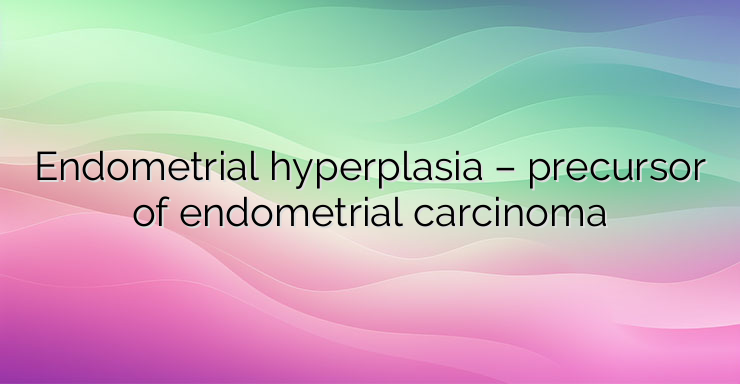Endometrial hyperplasia is a common disorder due to exposure to exogenous or endogenous estrogen together with relative progesterone deficiency. It is a precursor to endometrial carcinoma, which is one of the most common gynecological malignancies. To avoid the development of endometrial carcinoma, it is important for the clinician to closely monitor the signs and symptoms of endometrial hyperplasia. This imbalance in the hormonal environment can be observed in a number of conditions where the cause of excess estrogen is endogenous or exogenous. Irregular endometrial growth results in an abnormal gland-to-stromal ratio and presents along a continuum of endometrial changes. It includes varying degrees of histopathological complexity and atypical features in cells and nuclei. Risk factors associated with endometrial hyperplasia include age, obesity, genetic predisposition, diabetes mellitus, anovulatory cycles (perimenopause), ovarian tumors (granulomatous), hormone replacement therapy, immunosuppression, and Lynch syndrome. Endometrial malignancy is the most common gynecological cancer in Europe. According to statistics, it is also the fourth most common cancer in women worldwide. It is estimated that the incidence of endometrial hyperplasia is three times higher than the incidence of endometrial cancer. Endometrial hyperplasia is believed to be a precursor to endometrial cancer, and if caught early, cancer progression can be prevented. In order to limit the number of cases of endometrial malignancy, it is necessary to diagnose and treat endometrial hyperplasia appropriately. A large study conducted on the epidemiology of endometrial hyperplasia reported that women who were diagnosed with hyperplasia without atopy were in the 50-54 age range. Hyperplasia with atopy is observed most often in the age group of 60-64 years, and the disease is quite rare in people under 30 years of age. Endometrial hyperplasia results from estrogen predominance and relative progesterone deficiency. Typical causes of endogenous estrogen excess include anovulatory cycles (perimenopause, polycystic ovary syndrome), obesity, and estrogen-secreting ovarian tumors. Exogenous causes include uncontroversial estrogen therapy, hormone replacement therapy, and treatment with tamoxifen (used to treat breast cancer). During the normal menstrual cycle, estrogen leads to a proliferative endometrium. After ovulation in the luteal phase, the endometrium shows secretory changes under the action of progesterone. In the follicular phase, normal endometrial tissue shows no glandular clustering and the ratio of glands to stroma is less than 50%.In the secretory phase, normal endometrial glands may show features such as minimal crowding and a slight increase in the gland-to-stromal ratio. In endometrial hyperplasia without atopy, the ratio of gland to stroma increases to more than 50%. Glands may show mild crowding, cystic dilatation with scant visible prominence, and mitoses. However, no atopic cellular features were observed. In endometrial hyperplasia with atopy, the ratio of gland to stroma is further increased. There is glandular disorganization with luminal leakage, cellular mitoses, and nuclear atopy. References: 1. Parkash V, Fadare O, Tornos C, McCluggage WG. Committee Opinion No. 631: Endometrial Intraepithelial Neoplasia. Obstet Gynecol. 2015 2. Furness S, Roberts H, Marjoribanks J, Lethaby A. Hormone therapy in postmenopausal women and risk of endometrial hyperplasia. Cochrane Database Syst Rev. 2012 Aug


Leave a Reply